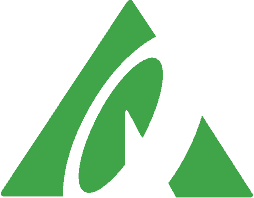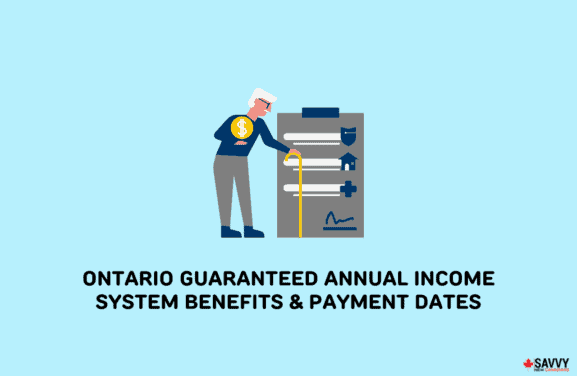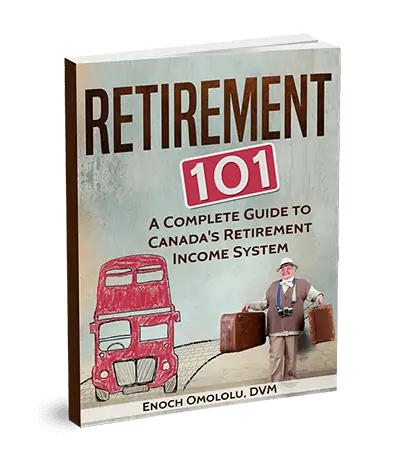When you leave an employer that offers a pension plan, your pension funds are transferred to a Locked-in Retirement Account (LIRA), where they stay invested until you retire.
A LIRA is a registered investment account like an RRSP and is sometimes referred to as a Locked-in RRSP or LRSP.
They are not as flexible as RRSPs for withdrawals but can easily be invested in similar assets, including stocks, bonds, mutual funds, GICs, cash, etc.
Best LIRA Accounts in Canada
A LIRA can be self-directed or managed on your behalf by professionals.
Some of the best LIRA accounts in Canada are offered by:
- Qtrade (self-directed broker LIRA account)
- Questrade (self-directed broker LIRA account)
- Wealthsimple Invest (robo-advisor LIRA account)
Best Brokerages in Canada
Wealthsimple

Questrade

Qtrade

–
$50 trading fee rebate
Up to $150 signup bonus
$0 trading commission; $10 monthly for USD account & realtime data
$0 ETF purchases; $4.95-$9.95 for stock trades
100+ free ETFs; $6.95-$8.75 for ETF/stock trades
Available on all devices and great for beginners
Offers other securities incl. FX and bonds
Excellent customer support
How Does a LIRA Account Work?
When you leave a company that offers a pension or are laid off before retirement, you are required to transfer your accumulated employer pension to a LIRA.
The funds are locked-in and cannot be withdrawn until retirement.
When you reach retirement age, which varies by province, you can convert your LIRA into a Life Income Fund (LIF), Locked-in Retirement Income Fund (LRIF), Annuity, or Prescribed Registered Retirement Income Fund (PRIF).
You can then use these accounts to generate retirement income.
Like RRSPs, LIRA investments grow tax-free until withdrawal. Unlike RRSPs, you can’t make additional contributions to a LIRA unless you are adding funds from another employer pension plan that’s being closed.
LIRA Withdrawal Rules
LIRA funds are locked away until retirement.
By December 31 of the year you turn 71, your LIRA must be closed and converted into a LIF, annuity, or similar account for generating regular income. You cannot withdraw it as a lump sum cash.
However, this conversion can happen as early as age 55 or even 50 in a province like Alberta.
There are instances where you can withdraw LIRA funds earlier, including:
- Significant financial hardship.
- Shortened life expectancy.
- A non-resident of Canada.
- If you have a small pension.
- Significant medical bills
LIRA administration rules vary across Canada, so check your provincial pension rules to see what applies.
Best LIRA Investments in Canada
You can hold a variety of investments in a LIRA, including:
- Cash
- Guaranteed Investment
- Certificates (GICs)
- Stocks
- Fixed Income Assets (bonds and treasury bills)
- Mutual Funds
- Exchange-Traded Funds
- Precious metals
A LIRA account can be opened at many Canadian financial institutions and managed by you or a portfolio manager or financial advisor.
Top LIRA Accounts
For self-directed LIRA accounts, you will need a brokerage account like Qtrade or Questrade to purchase assets while paying low commissions.
Qtrade LIRA
Qtrade’s LIRA makes it easy to transfer an existing pension from another bank into a LIRA at Qtrade.
You can hold various investments like stocks, bonds, mutual funds, GICs, and ETFs in your self-directed account.
With this LIRA, you also get access to trading tools, screeners, real-time quotes, and customizable watchlists.
Qtrade LIRA fees include trading commissions and a quarterly maintenance fee if you have an account less than $25,000 (waived in some situations).
- Stocks: $8.75/trade.
- ETFs: 100+ are free to trade; otherwise, you pay $8.75/trade.
- Mutual funds: $8.75/trade.
- Fixed income assets: $1 per $1,000 face value.
New Qtrade clients get a $50 bonus when they open an account and fund it with at least $1,000.
Questrade LIRA
Questrade is Canada’s top brokerage platform. It offers both non-registered and registered investment accounts like the LIRA, RRSP, LRSP, LIF, RRIF, and spousal RRSP.
Investments you can purchase for your LIRA on Questrade include stocks, ETFs, bonds, GICSs, mutual funds, and precious metals.
Questrade LIRA fees are mainly tied to the trading commissions you pay:
- Stocks: 1 cent per share ($4.95 minimum and $9.95 maximum per order).
- ETFs: Free to purchase; $4.95 minimum and $9.95 maximum per transaction when selling.
- Mutual funds: $9.95/trade.
- Bonds: No fees with a $5,000 minimum purchase.
- GICs: No fees with a $5,000 minimum purchase.
- Precious metals: $19.95 USD/trade
Questrade clients can access real-time market data and advanced charting tools.
When you open a new account using our promo link or code (SAVVY50), you get $50 in free trades after depositing your first $1,000.
Related: Best RRSP Investments.
Wealthsimple LIRA
Wealthsimple Invest offers a hassle-free LIRA account through its robo-advisor platform.
This account can be opened in a few minutes and involves answering an investor profile questionnaire that gauges your risk tolerance.
With a robo-advisor LIRA account, your investments are automated, including rebalancing, tax-loss harvesting, and dividend re-investing.
Wealthsimple LIRAs hold low-cost ETFs and also provide socially responsible investment options.
The fees you pay include a management fee ranging from 0.40% to 0.50% annually and inbuilt ETF fees.
New Wealthsimple clients get a $25 cash bonus when they open an account using our promo offer and deposit $500 or more.
LIRA accounts are also offered by TD, RBC, and Scotiabank.
Best LIRA Savings Accounts
You can hold cash in a LIRA or LIF using a GIC.
These GICs can be purchased from banks, credit unions, and brokerages that offer them, including RBC, CIBC, Laurentian Bank, and Questrade.
LIRA GICs often have the same interest rates as comparable RRSP GICs for the same terms.
Pros of a Locked-In Retirement Account
The benefits of a locked-in retirement account include:
- Tax Sheltered Growth: Investments in a LIRA grow tax-free until you withdraw funds in retirement. Capital gains, dividends, and income earned amplify your account growth in a tax-deferred environment.
- Pension Fund Preservation: Since LIRAs are locked in, you won’t be tempted to spend the money on a whim. Accountholders are forced to save for retirement and can only withdraw funds early in limited scenarios.
- Flexible Investment Account: You can invest in various assets inside a LIRA, including stocks, bonds, mutual funds, ETFs, and cash.
- Flexible Income Generation: Easily unlock a steady retirement income stream using a LIF or LRIF when you retire.
- Enjoy Creditor Protection: Like other registered retirement plans, LIRAs offer some creditor protection.
Related: Best Places To Retire in Canada.
Cons of a Locked-In Retirement Account
The downsides of a locked-in retirement account include:
- Limited Contributions: You can’t make further contributions to a LIRA outside of a previous employer’s pension plan.
- Mandatory Minimum Withdrawal: If you convert your LIRA to a LIF, you are limited to minimum and maximum withdrawals annually. If you need more funds than the maximum prescribed amount, you may be out of luck.
- Provincial Differences: LIRAs governed by provincial regulations may differ in how they are administered, which can be confusing.
- Limited Access To Funds: It is difficult to access LIRA funds before retirement. You must reach a specific age or show financial hardship to withdraw from a LIRA before retirement.
Related: Senior Benefits at Age 55.
LIF vs RRSP
| LIRA | RRSP | |
| Contributions | You can’t make additional contributions after transferring your company pension plan | You can contribute up to a certain amount annually |
| Tax deduction | Contributions are usually tax-deductible | Contributions are tax-deductible |
| Tax-deferred growth | Investments grow tax-deferred until withdrawal | Investments grow tax-deferred until withdrawal |
| Withdrawal restrictions | Funds are locked-in until retirement | You can withdraw RRSP funds anytime and pay taxes owned, or withdraw tax-free via the Home Buyers and Lifelong Learning Plans |
| Investment assets | Can invest in stocks, bonds, ETFs, GICs, etc. | Can invest in stocks, bonds, ETFs, GICs, etc. |
| Regulations | Varies from province to province | Federal and consistent across Canada |
| Retirement income generation | Convert to LIF, LRIF, or annuity. Minimum and maximum withdrawal requirements. | Convert to RRIF, annuity, or take cash. Minimum withdrawals apply to RRIFs |
| Creditor protection | Offers creditor protection | Offers creditor protection |
| Account closure | Must be closed when you turn 71 | Must be closed when you turn 71 |
Related: Best Senior Freebies in Ontario.
LIF Minimum and Maximum Withdrawal Rates 2024
The amount of money you can withdraw from your LIF annually depends on your age (or your spouse’s age) and how much you have saved.
The maximum LIF rates shown below apply to Ontario, British Columbia, Alberta, Saskatchewan, New Brunswick, and Newfoundland and Labrador.
| Age on Jan 1 | Minimum LIF Withdrawal | Maximum LIF Withdrawal |
| 54 | 2.78% | 6.45% |
| 55 | 2.86% | 6.51% |
| 56 | 2.94% | 6.57% |
| 57 | 3.03% | 6.63% |
| 58 | 3.13% | 6.70% |
| 59 | 3.23% | 6.77% |
| 60 | 3.33% | 6.85% |
| 61 | 3.45% | 6.94% |
| 62 | 3.57% | 7.04% |
| 63 | 3.70% | 7.14% |
| 64 | 3.85% | 7.26% |
| 65 | 4.00% | 7.38% |
| 66 | 4.17% | 7.52% |
| 67 | 4.35% | 7.67% |
| 68 | 4.55% | 7.83% |
| 69 | 4.76% | 8.02% |
| 70 | 5.00% | 8.22% |
| 71 | 5.28% | 8.45% |
| 72 | 5.40% | 8.71% |
| 73 | 5.53% | 9.00% |
| 74 | 5.67% | 9.34% |
| 75 | 5.82% | 9.71% |
| 76 | 5.98% | 10.15% |
| 77 | 6.17% | 10.66% |
| 78 | 6.36% | 11.25% |
| 79 | 6.58% | 11.96% |
| 80 | 6.82% | 12.82% |
| 81 | 7.08% | 13.87% |
| 82 | 7.38% | 15.19% |
| 83 | 7.71% | 16.90% |
| 84 | 8.08% | 19.19% |
| 85 | 8.51% | 22.40% |
| 86 | 8.99% | 27.23% |
| 87 | 9.55% | 35.29% |
| 88 | 10.21% | 51.46% |
| 89 | 10.99% | 100.00% |
| 90 | 11.92% | 100.00% |
| 91 | 13.06% | 100.00% |
| 92 | 14.49% | 100.00% |
| 93 | 16.34% | 100.00% |
| 94 | 18.79% | 100.00% |
| 95 | 20.00% | 100.00% |
As you may notice, the minimum LIF withdrawal rates are the same as RRIF minimum withdrawal rates.
FAQs
No, direct LIRA to TFSA transfers is not possible. However, you can withdraw LIF funds and deposit them into a TFSA if you have a contribution room.
Yes, funds in a locked-in retirement account can be used to invest in a GIC.
You can transfer LIRA funds to a LIF when you retire or from age 55. You can also use LIRA funds to purchase an annuity.
A LIRA account must be closed by December 31 of the year you reach 71. It can be converted to a life income fund (LIF) or annuity.
No, you cannot cash out a LIRA in Canada except in a few situations, such as severe financial hardship or reduced life expectancy.
Tax is not levied on a LIRA since you are not allowed to withdraw cash. Your investments grow tax-free until you start making withdrawals when it is converted to a LIF or annuity.
Yes, you may be allowed to withdraw a LIRA to pay off debt on a principal residence, medical expenses, or rent arrears.
The earliest you can withdraw money from a LIRA is at age 55 in most provinces, and age 50 in Alberta.





